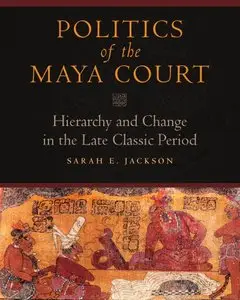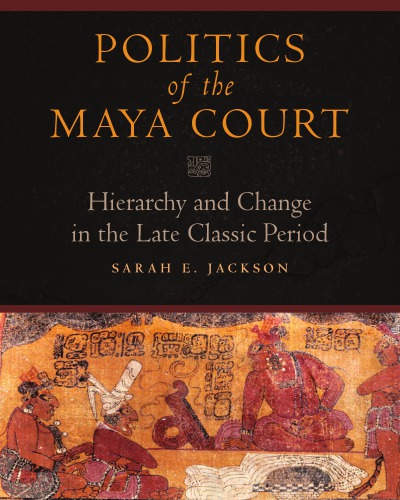Politics of the Maya Court: Hierarchy and Change in the Late Classic Period (Latin American and Caribbean Arts and Culture) by Sarah E. Jackson
English | 2013 | ISBN: 080614341X | 192 pages | PDF | 97,8 MB
English | 2013 | ISBN: 080614341X | 192 pages | PDF | 97,8 MB
In recent decades, advances in deciphering Maya hieroglyphic writing have given scholars new tools for understanding key aspects of ancient Maya society. This book—the first comprehensive examination of the Maya royal court—exemplifies the importance of these new sources. Authored by anthropologist Sarah E. Jackson and richly illustrated with drawings, photographs, and maps, Politics of the Maya Court uses hieroglyphic and iconographic evidence to explore the composition and social significance of royal courts in the Late Classic period (a.d. 600–900), with a special emphasis on the role of courtly elites.
As Jackson explains, the Maya region of southern Mexico and Central America was not a unified empire but a loosely aggregated culture area composed of independent kingdoms. Royal courts had a presence in large, central communities from Chiapas to Yucatan and the highlands of Guatemala and western Honduras. Each major polity was ruled by a k’uhul ajaw, or holy lord, who embodied intertwined aspects of religious and political authority. The hieroglyphic texts that adorned walls, furniture, and portable items in these centers of power provide specific information about the positions, roles, and meanings of the courts. Jackson uses these documents as keys to understanding Classic Maya political hierarchy and, specifically, the institution of the royal court. Within this context, she investigates the lives of the nobility and the participation of elites in court politics. By identifying particular individuals and their life stories, Jackson humanizes Maya society, showing how events resulted from the actions and choices of specific people.
Jackson’s innovative portrayal of court membership provides a foundation for scholarship on the nature, functions, and responsibilities of Maya royal courts.



